



1st – 27th March 2005
This warm and evocative cyber domestic work is a convergence of personal and political aesthetics that is reflective and declares a conscious subjectivity. Loseby’s internationally recognised net artworks demonstrate keen alertness to her’s and her viewers’ positioning in physical, virtual and political space.
In this exhibition, visitors are offered another experience of these relational dynamics. A bank of newspaper-covered TVs loop 10 video loops using a touch screen to display a large scale digital painting over-layed with headlines streamed live from online news networks.
Loseby’s internationally recognised net artworks always demonstrate keen alertness to her’s and her viewers’ positioning in physical, virtual and political space. In this exhibition, visitors are offered another experience of these relational dynamics.
A bank of newspaper-covered TVs loop 10 video clips of meal-times in the artist’s house. Viewers are invited to interact with the same video loops using a touch screen to display a large scale digital painting overlayed with headlines streamed live from online news networks.
We invite you to the opening of the exhibition to view the work and to meet the artist in person. 7 pm Tuesday 1st March 2005.
Images from the exhibition.
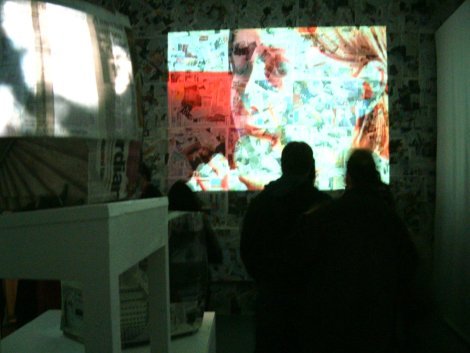
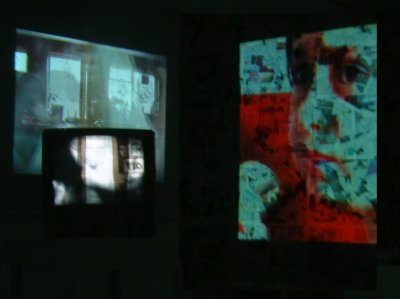
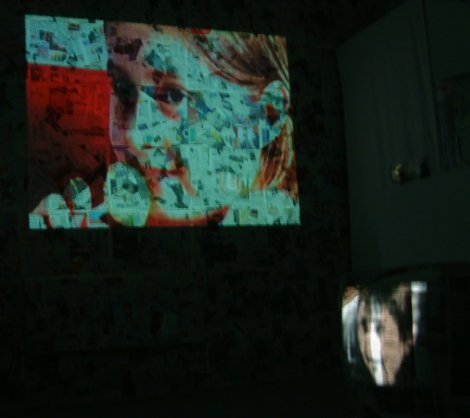
Eating Canvas is supported by the Arts Council of England.
Data Agency is a SCAN showcase of live, real-time, online media arts. Combining found data with content produced by webcams, streamed audio, generative programmes and their own sounds and visuals, these artists reconfigure the original function and meaning of the data to create their own new devices and meanings to enhance online arts projects.
We invite you to the opening of the exhibition to view the work and to meet some of the artists in person.
Susan Collins
Fenlandia features a series of gradually unfolding, digital landscapes created by images harvested from webcams in rural, technological sites (Silicon Fen in Norfolk, Silicon Valley in the M4 corridor, and Silicon Glen in Scotland) around the UK. The data feed on the webcams updates the images pixel by pixel, recording fluctuation in light and movement throughout the day.
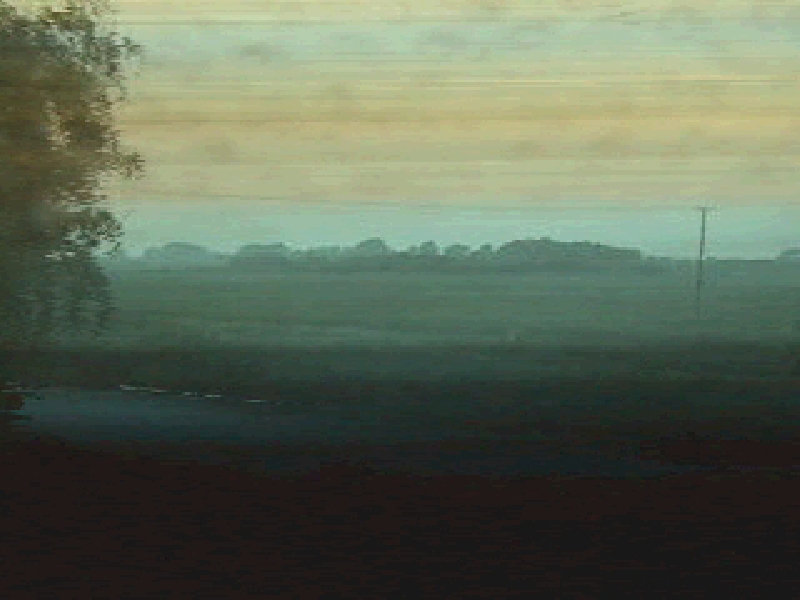
At any one time, the viewer experiences a different version of the image as the pixels change and the piece expands – Fenlandia extrapolates and develops traditional devices of the landscape tradition in painting. Commissioned for the Silicon Fen project, a collaboration between Norwich School of Art & Design and Film and Video Umbrella
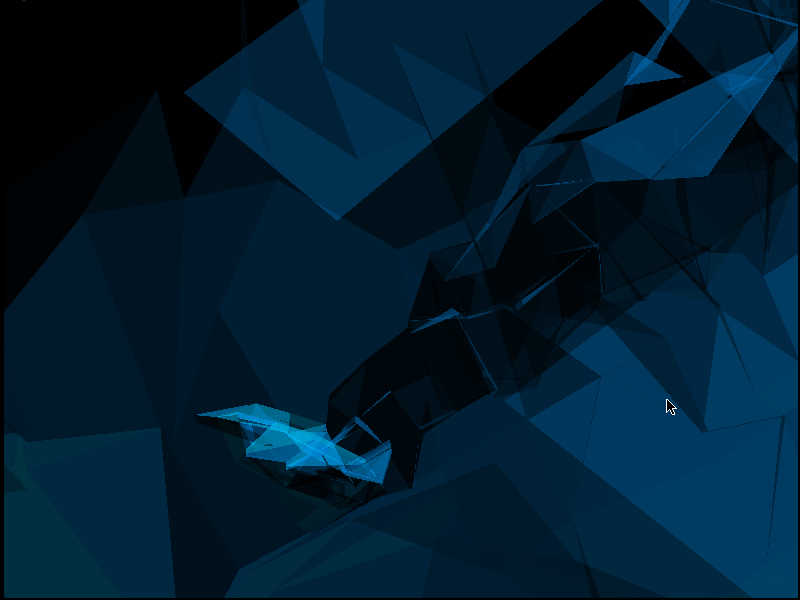
A landscape from beyond the edges of the browser window that gives glimpses of unseen places. dotdotdot is constructed using several different motion capture systems and improvised performances creating abstract digital portraits. These animated avatars move and react to players inputs within an online virtual environment. Commissioned by Future Physical and Essexdance. The online version was produced in association with SCAN.
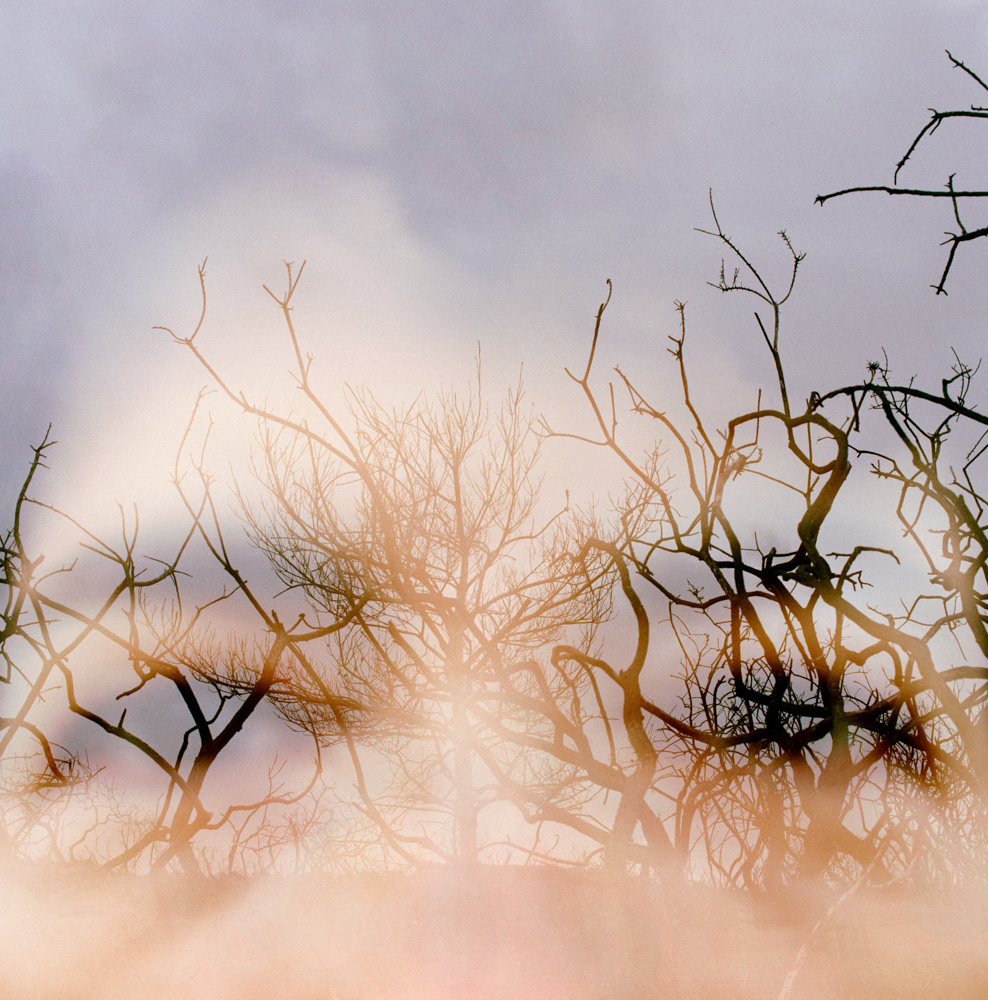
Reverb by Lorie Novak examines the cultural relevance of photographs by interspacing media images of significant moments from the last 50 years with highly personal images which place the viewer within a deeply political and historical context. Direct broadcasts and archived sounds of historical events, political speeches, and personal testimonies create different sound/image permutations each time the piece is played. Reverb, made as an installation as part of an ArtSway Production Residency. Online version commissioned by SCAN.
Neil C Smith
(AS)RAM…Through improvisation and self-generating artworks, Oxford-based artist Neil C Smith places the creative process in real-time, often remixing the work of other artists; much of his work is unrecorded and ephemeral. (AS)RAM is an online development of Neil’s solo performance Radio Access Memory, an improvised remix of live radio.
Data Agency is a SCAN exhibition produced in association with Furtherfield at HTTP.
Online exhibition www.scansite.org December 2004 – May 2005
About SCAN.
SCAN is the new media arts agency in the South of England with a commitment to the delivery and facilitation of collaborative works. The organisation provides a fertile space for individuals and organisations to share resources in the realisation of quality projects and experimental initiatives using emergent technologies and practices. Using the SCAN website, the physical spaces of our member organisations and the expertise of our partner organisations, it provides a focal point for a wide spectrum of digital arts practice.
Featured image: MIKA TAANILA – Erkki Kurenniemi : The Dawn of Dimi
Press Release for print (pdf 650k)
HTTP’s debut exhibition brings you work by two extraordinary Finnish artists. This show offers London an exhilarating introduction to the intriguing and dynamic world of technological art practice. The first of a series of exhibitions and events showing mixes of screen-based and physical artworks. Mika Taanila’s documentary film ‘The Future Is Not What It Used To Be’ entwines the past with the present.
In this exhibition, his representation of Erkki Kurenniemi’s philosophical journey through digital possibility is juxtaposed, projected in the same space with a physical artwork from that same history, in the form of DIMI-A machine (Digital Music Instrument, Associative Memory).
We invite you to come to the opening of the exhibition and the gallery to view the work and to meet the artists in person.
Mika Taanila
Born 1965 in Helsinki where he lives and works. Mika Taanila is an artist working fluently in the fields of documentary filmmaking and visual arts. His films deal with the the significant and alarming issues of human engineering and urban artificial surroundings. Taanila specializes in the futuristic ideas and utopias of contemporary science.
The Future Is Not What It Used To Be (Finland 2002)
The Future is Not What It Used To Be is a documentary by Mika Taanila, the director of Futuro – A New Stance for Tomorrow (1998). It features never-before-seen archival material from the early years of electronic art, including excerpts from Kurenniemi’s unfinished experimental short films. The documentary entwines the past with the present, i.e. with the protagonist’s manic archival project, in which Kurenniemi records his thoughts, everyday observations, images and objects, constantly and obsessively. All this in an effort to combine man and machine – to reconstruct the soul of man. (avanto festival, 2002)
Erkki Kurenniemi
Born 1941 in Hämeenlinna, Finland. A pioneer of electronic art in Finland, Erkki Kurenniemi, composed computer-based music and designed his own instruments as early as the 1960’s. His career embraces music, film, computers, robotics – in other words, both art and science – with natural ease. He is a nuclear scientist/inventor/artist, whose projects and ideas have been surprisingly ahead of their times.
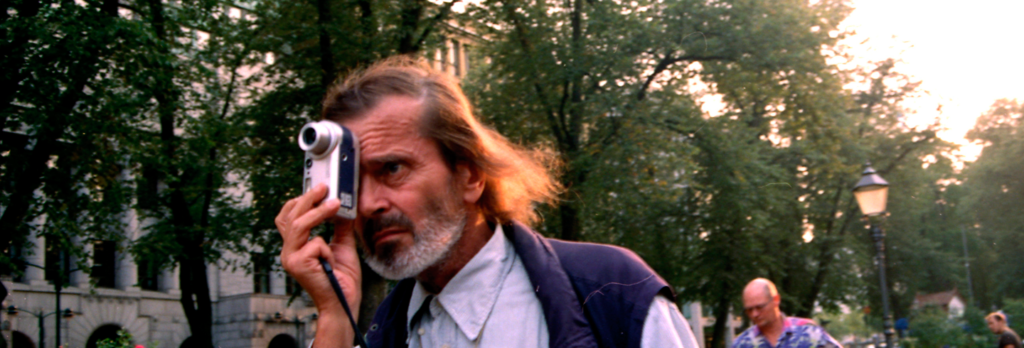
He is best known as a designer of unique electronic instruments at Helsinki University’s Department of Music during the 1960s. He subsequently had an impressive career as a pioneer of industrial automation at Rosenlew in the 70s, an automation designer in Nokia’s cable division in the early 80s, and as head of exhibition planning at the Heureka Science Centre in 1987-1999.
An exploratory search for totally new kinds of user interfaces for musical instruments and the semiautomatic generation of music have been among Kurenniemi’s main goals throughout all these years.
DIMI-A (Digital Music Instrument, Associative Memory)
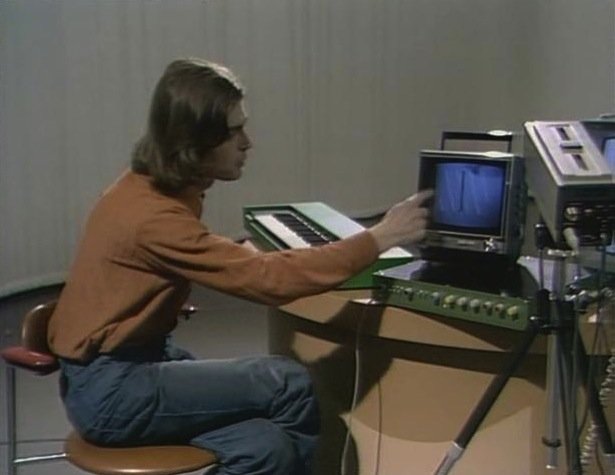
The first “automated instrument” he invented was the Andromatic, a synthesizer purchased in 1968 by the Swedish composers Leo Nilsson and Ralph Lundsten. That same year, an old friend, M. A. Numminen, invited him to design a new kind of electronic “collective instrument”. The result was called the Sähkökvartetti (“Electric uartet”), a mind-boggling combination basically made up of four instruments rolled into one: a drum machine, violin machine, voice machine and melody machine. After that, Kurenniemi developed a range of digital instruments. The first in the series was the DIMI-A (Digital Music Instrument, Associative Memory), which was played using two ‘electric pens’. With the DIMI-S (“The Sexophone”) four players generated six-voice music by touching each other. The instrument measured the electrical resistance between all the pairs of players. Kurenniemi also designed an instrument called the Electroencephalophone (DIMI-T), in which the electronic sound was controlled by electrodes behind the player’s ears, recording changes in their brain activity. The DIMI-O (Digital Music Instrument, Optical Input, 1971) transformed video images into music in real-time.
According to Kurenniemi’s own “principle of unity”, all his projects – articles, plans, visions of the future, films, home videos, lectures, TV interviews, his work at the Heureka Science Centre, musical compositions and the fantastic electric instruments he has built – reflect the same holistic ideas.
– Mika Taanila
Copied with permission from Frame.
For further information contact: live from Frieze Art Fair
Monday 18th October 3-4pm GMT.
Mika Taanila and Erkki Kurenniemi in conversation with Ruth Catlow and Tobi Maier on Resonance 104.4FM
Curated by: Tobi Maier and Furtherfield
This exhibition is supported by the Finnish Fund for Art Exchange (FRAME) and the Finnish Institute in London.